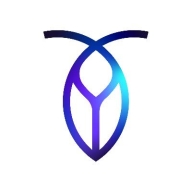

CockroachDB and Amazon RDS on Outposts are competitive solutions in the cloud database service category. Amazon RDS on Outposts appears to have the advantage with its extensive feature set and integration capabilities.
Features: CockroachDB leverages a distributed architecture ensuring high availability and seamless scalability, crucial for intensive data workloads. Its architecture emphasizes decentralized operations. Amazon RDS on Outposts provides integration with AWS services, supporting hybrid deployments. It integrates with diverse database engines, offering greater versatility and feature richness within Amazon's ecosystem.
Ease of Deployment and Customer Service: CockroachDB offers a user-friendly deployment model emphasizing simplicity and scalability, supported by effective customer service. Amazon RDS on Outposts deploys more complexly due to its hybrid nature but benefits from AWS's wide-ranging customer service resources, providing strategic infrastructure advantages across diverse environments.
Pricing and ROI: CockroachDB is noted for a cost-efficient setup with competitive pricing, facilitating rapid ROI. Amazon RDS on Outposts may incur higher costs due to advanced features and reliance on AWS infrastructure, yet it offers potential for a greater long-term ROI through extensive AWS service integrations, attracting businesses aiming for sustainable scalability.
| Product | Market Share (%) |
|---|---|
| CockroachDB | 4.2% |
| Amazon RDS on Outposts | 0.4% |
| Other | 95.4% |


| Company Size | Count |
|---|---|
| Small Business | 7 |
| Midsize Enterprise | 1 |
| Large Enterprise | 5 |
Amazon RDS on Outposts extends AWS cloud benefits to on-premises setups, offering seamless database management with low latency. It's tailored for users requiring consistent infrastructure technologies both on-premises and in the cloud.
Designed to provide managed database services using the familiar AWS ecosystem, Amazon RDS on Outposts supports popular databases such as MySQL, PostgreSQL, and SQL Server. It delivers the same AWS APIs, functionalities, and tools for a unified experience. This setup is ideal for latency-sensitive applications that need to remain on-site yet benefit from the scalability, reliability, and automation of managed services.
What features define Amazon RDS on Outposts?Industries like finance and healthcare implement Amazon RDS on Outposts to manage data-sensitive operations efficiently. Banks use it for secure, low-latency transaction processing while healthcare providers benefit from compliant and reliable patient data management.
Cockroach Labs is the creator of CockroachDB, the cloud-native, resilient, distributed SQL database enterprises worldwide trust to run mission-critical AI and other applications that scale fast, avert and survive disaster, and thrive everywhere. It runs on the Big 3 clouds, on prem, and in hybrid configurations powering Fortune 500, Forbes Global 2000, and Inc. 5000 brands, and game-changing innovators, including OpenAI, CoreWeave, Adobe, Netflix, Booking.com, DoorDash, FanDuel, Cisco, P&G, UiPath, Fortinet, Roblox, EA, BestBuy, SpaceX, Nvidia, the USVA, and HPE. Cockroach Labs has customers in 40+ countries across all world regions, 25+ verticals, and 50+ Use Cases. Cockroach Labs operates its own ISV Partner Ecosystem powering Payments, Identity Management (IDM/IAM), Banking & Wallet, Trading, and other high-demand use cases. Cockroach Labs is an AWS Partner of the Year finalist and has achieved AWS Competency Partner certifications in Data & Analytics and Financial Services (FSI). CockroachDB pricing is available at https://www.cockroachlabs.com/pricing/
Vector, RAG, and GenAI Workloads
CockroachDB includes native support for the VECTOR data type and pgvector API compatibility, enabling storage and retrieval of high-dimensional embeddings. These vector capabilities are critical for Retrieval-Augmented Generation (RAG) pipelines and GenAI workloads that rely on similarity search and contextual embeddings. By supporting distributed vector indexing within the database itself, CockroachDB removes the need for external vector stores and allows AI applications to operate against a single, consistent data layer.
C-SPANN Distributed Indexing
At the core of CockroachDB’s vector search capabilities is the C-SPANN indexing engine. C-SPANN provides scalable approximate nearest neighbor (ANN) search across billions of vectors while supporting incremental updates, real-time writes, and partitioned indexing. This ensures low-latency retrieval in the tens of milliseconds, even under high query throughput. The algorithm eliminates central coordinators, avoids large in-memory structures, and leverages CockroachDB’s sharding and replication to deliver scale, resilience, and global consistency.
Machine Learning and Apache Spark Integration
CockroachDB integrates with modern ML workflows by supporting embeddings generated through frameworks such as AWS Bedrock and Google Vertex AI. Its compatibility with the PostgreSQL JDBC driver allows seamless integration with Apache Spark, enabling distributed processing and advanced analytics on CockroachDB data.
PostgreSQL Compatibility and JSON Support
CockroachDB speaks the PostgreSQL wire protocol, so applications, drivers, and tools designed to work with Postgres can connect to CockroachDB without modification, enabling seamless use of familiar SQL features and integration with the wider Postgres ecosystem. This includes support for advanced data types such as JSON and JSONB, which allow developers to store and query semi-structured data natively.
Geospatial and Graph Capabilities
CockroachDB also provides first-class geospatial data support, allowing developers to store, query, and analyze spatial data directly in SQL. For graph workloads, CockroachDB employs JSON flexibility to represent relationships and delivers query capabilities for graph-like traversals. This combination enables hybrid applications that merge relational, geospatial, document, and graph data within a single platform.
Analytics, BI, and Integration
To support high-performance analytics and BI, CockroachDB supports core analytical use cases and functions including Enterprise Data Warehouse, Lakehouse, and Event Analytics, and offers materialized views for precomputing complex joins and aggregations. Its PostgreSQL wire compatibility ensures direct connectivity with all relevant BI and analytics apps and tools including Amazon Redshift, Snowflake, Kafka, Google BigQuery, Salesforce Tableau, Databricks, Cognos, Looker, Grafana, Power BI, Qlik Sense, SAP, SAS, Sisense, and TIBCO Spotfire. Data scientists can interact with CockroachDB through Jupyter Notebooks, querying structured and semi-structured data and loading results for analysis. Change data capture (CDC) streams provide real-time updates to analytics pipelines and feature stores, keeping downstream systems fresh and reliable. Columnar vectorized execution accelerates query processing, optimizes transactional throughput, and minimizes latency for demanding distributed workloads.
MOLT AI-Powered Migration
Organizations often know their data infrastructure is not supporting the business, but find it too painful to change. CockroachDB’s MOLT (Migrate Off Legacy Technology) is designed to enable safe, minimal-downtime database migrations from legacy systems to CockroachDB. MOLT Fetch supports data migration from PostgreSQL, MySQL, SQL Server, and Oracle, with SQL Server and DB2 coming soon. CockroachDB also has a portfolio of data replication platform integrations including Precisely, Striim, Qlik, Confluent, IBM, etc.
Together, these capabilities ensure that CockroachDB supports both operational and analytical workloads, bridging traditional SQL applications with emerging Gen AI and ML use cases.
We monitor all Relational Databases Tools reviews to prevent fraudulent reviews and keep review quality high. We do not post reviews by company employees or direct competitors. We validate each review for authenticity via cross-reference with LinkedIn, and personal follow-up with the reviewer when necessary.